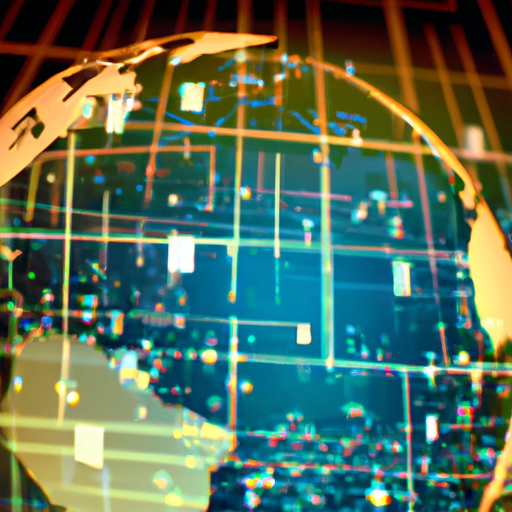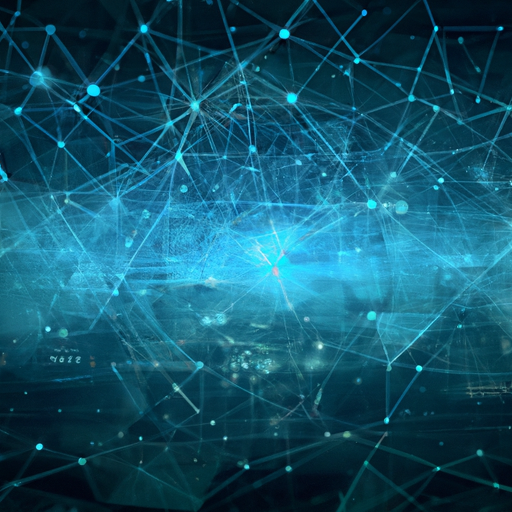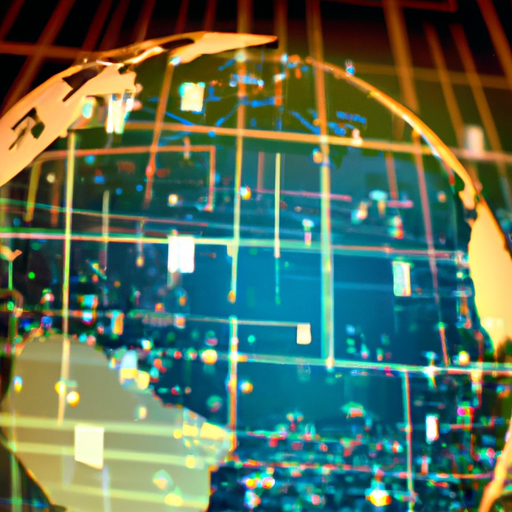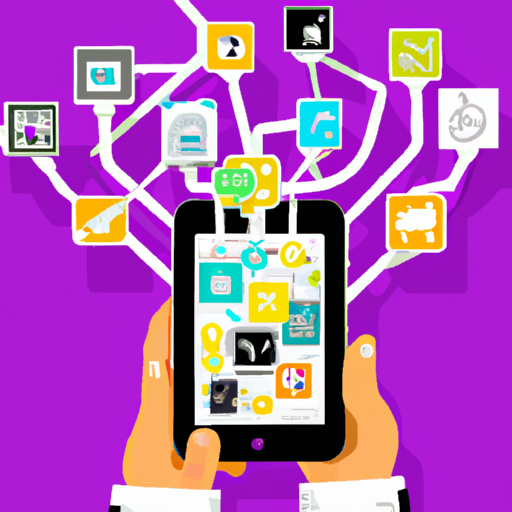Emerging Trends In Information Technology
Have you ever wondered about the latest developments in the field of information technology? In this article, we will explore the emerging trends that are shaping the future of IT. From artificial intelligence and machine learning to cybersecurity and quantum computing, these advancements are revolutionizing the way we live and work in the digital age. Stay tuned to learn more about the exciting innovations that are propelling the world of information technology forward.

Table of Contents
Artificial Intelligence
Artificial Intelligence (AI) is a branch of computer science that focuses on developing intelligent machines capable of performing tasks that would typically require human intelligence. AI relies on algorithms and learning processes to analyze vast amounts of data and make informed decisions. One significant subfield of AI is Machine Learning.
Machine Learning
Machine Learning involves using algorithms to enable computers to learn and make predictions or decisions without being explicitly programmed. It allows machines to recognize patterns, gain insights, and improve their performance over time. Machine Learning algorithms can process large data sets, identify trends, and make accurate predictions. This technology has diverse applications across industries, from healthcare and finance to marketing and agriculture.
Natural Language Processing
Natural Language Processing (NLP) is a subset of AI that focuses on the interaction between computers and human language. NLP enables machines to understand, interpret, and respond to natural language inputs, such as speech or text. With NLP, computers can analyze sentiments, extract information, and even engage in human-like conversations. This has led to advancements in virtual assistants, chatbots, and the automation of customer service processes.
Robotic Process Automation
Robotic Process Automation (RPA) is the use of software robots or “bots” to automate repetitive tasks and streamline business processes. RPA bots can mimic human actions, such as logging into applications, copying and pasting data, and performing rule-based tasks. This technology enables organizations to improve efficiency, reduce errors, and free up their employees to focus on more valuable and strategic work.
Internet of Things
The Internet of Things (IoT) refers to the network of physical devices, vehicles, appliances, and other objects embedded with sensors, software, and connectivity. These devices can collect and exchange data with each other, creating a massive interconnected network. IoT has become increasingly popular and is transforming various industries.
Smart Home Technology
Smart Home Technology encompasses devices and systems that connect and automate household functions. This includes smart thermostats, lighting systems, security cameras, and home appliances. IoT-enabled smart home devices can be controlled remotely through mobile apps or voice commands. They offer convenience, energy efficiency, and improved security for homeowners.
Connected Cars
Connected Cars leverage IoT technology to enhance the driving experience and improve vehicle safety. These cars have sensors and connectivity features that enable them to exchange information with other vehicles and infrastructure systems. Connected Cars can provide real-time traffic updates, predictive maintenance alerts, and even autonomous driving capabilities.
Industrial IoT
Industrial IoT (IIoT) refers to the application of IoT technology in industrial settings, such as manufacturing plants, supply chain management, and logistics. IIoT enables machines and systems to communicate, share data, and make autonomous decisions, leading to increased efficiency, reduced downtime, and better resource utilization. It has the potential to revolutionize industries, improving productivity and profitability.

Blockchain Technology
Blockchain technology is a decentralized and transparent digital ledger system that records transactions across multiple computers or nodes. It provides a secure and tamper-proof way to verify and store data. Blockchain has gained significant attention due to its association with cryptocurrencies, but its potential applications extend far beyond that.
Cryptocurrencies
Cryptocurrencies, such as Bitcoin and Ethereum, are digital or virtual currencies that rely on blockchain technology for secure transactions. They operate independently of central banks and provide a decentralized way to transfer and store value. Cryptocurrencies have gained popularity as an alternative investment and means of payment due to their potential for anonymity, lower transaction fees, and global accessibility.
Smart Contracts
Smart Contracts are self-executing contracts with terms and conditions written directly into the code of a blockchain. These contracts automatically enforce the agreed-upon rules and execute transactions when specified conditions are met. Smart Contracts eliminate the need for intermediaries, reduce costs, and ensure transparency and trust in transactions.
Decentralized Applications
Decentralized Applications (DApps) are applications that run on a decentralized network or blockchain. Unlike traditional applications, DApps operate on a peer-to-peer basis without a central authority. They offer various benefits, including enhanced security, data privacy, and resistance to censorship. DApps have the potential to disrupt traditional industries, such as finance, supply chain management, and healthcare.
Edge Computing
Edge Computing is a distributed computing paradigm that brings computation and data storage closer to the edge of the network, typically near the data source or end-users. It aims to reduce latency, increase bandwidth efficiency, and enhance real-time data processing capabilities.
Fog Computing
Fog Computing extends the concept of cloud computing closer to the edge of the network. It involves deploying resources and services, such as data storage and processing, at the edge devices or local gateways. Fog Computing enables faster data analysis, reduced network congestion, and improved privacy and security.
Mobile Edge Computing
Mobile Edge Computing (MEC) brings computing capabilities, storage, and data processing closer to the end-users in mobile networks. MEC integrates with the wireless infrastructure and enables real-time, low-latency services. Mobile applications that require immediate data processing or low latency, such as augmented reality or autonomous vehicles, can benefit from MEC.
Cloudlet
A Cloudlet is a small-scale data center or computing resource located at the edge of a network. It provides computing resources and services to nearby users or devices. Cloudlets bridge the gap between cloud computing and edge computing, allowing for faster data processing, reduced latency, and improved user experience for resource-intensive applications.

Cybersecurity
Cybersecurity is the practice of protecting computer systems, networks, and data from unauthorized access, theft, or damage. With the increasing reliance on technology and the rise in cyber threats, cybersecurity has become a critical concern for individuals and organizations.
Zero Trust Architecture
Zero Trust Architecture is a security framework that assumes no trust by default, even within the network perimeter. It requires continuous verification of user identities and devices and applies strict access controls and monitoring. Zero Trust Architecture aims to prevent lateral movement within a network and reduce the risk of unauthorized access or data breaches.
Biometric Authentication
Biometric Authentication refers to the use of unique biological or behavioral characteristics, such as fingerprints, facial recognition, or voice patterns, to verify and authenticate users’ identities. Biometric authentication offers enhanced security compared to traditional password-based methods, as biometric traits are difficult to fake or steal.
Endpoint Security
Endpoint Security focuses on securing individual devices, such as laptops, smartphones, and IoT devices, from cyber threats and unauthorized access. It involves implementing firewalls, antivirus software, and encryption to protect against malware, data breaches, and other cyber attacks. Endpoint security is essential in today’s interconnected world, where numerous devices access sensitive data.
Virtual Reality
Virtual Reality (VR) is a simulated environment created with the help of computer technology. It immerses users in a virtual world, enabling them to interact with and experience a computer-generated environment.
Immersive Gaming
Immersive Gaming refers to the use of virtual reality technology to create more engaging and realistic gaming experiences. VR gaming allows players to enter virtual worlds, interact with virtual objects, and experience games from a first-person perspective. It offers a new level of realism, immersion, and interactivity, revolutionizing the gaming industry.
Virtual Meetings
Virtual Meetings leverage virtual reality to facilitate remote collaboration and communication. Instead of traditional video conferencing, virtual meetings enable participants to use avatars and interact in a shared virtual space. This technology provides a sense of presence and enables more natural and immersive interactions, eliminating geographical barriers.
Training Simulations
Training Simulations in virtual reality offer a safe and cost-effective way to train individuals in various fields. VR allows trainees to practice hands-on skills, experience simulated scenarios, and receive immediate feedback in a controlled and realistic environment. Training simulations are widely used in industries such as aviation, healthcare, and military to enhance learning and provide realistic training experiences.
Big Data Analytics
Big Data Analytics involves the process of examining large and complex data sets to uncover patterns, associations, and insights. It leverages advanced analytical techniques and technologies to extract meaningful and actionable information from vast amounts of structured and unstructured data.
Predictive Analytics
Predictive Analytics uses historical data, statistical algorithms, and machine learning models to make predictions about future events or outcomes. By analyzing patterns and trends in existing data, predictive analytics can forecast customer behavior, identify potential risks, and optimize decision-making processes. This technology has applications in marketing, finance, healthcare, and various other industries.
Real-time Data Processing
Real-time Data Processing involves analyzing and responding to data as it is generated, without any delays. With the increasing volume and velocity of data, real-time processing enables organizations to make quick and informed decisions based on up-to-date information. Real-time data processing finds applications in areas such as fraud detection, stock trading, and IoT monitoring.
Data Visualization
Data Visualization is the graphical representation of data and information. It uses visual elements, such as charts, graphs, and maps, to convey complex data sets in a more understandable and compelling manner. Data visualization helps in identifying patterns, trends, and outliers, allowing users to make better-informed decisions. It is widely used in business intelligence, sales forecasting, and data-driven storytelling.
5G Technology
5G Technology is the next generation of wireless technology that aims to provide faster data transfer speeds, lower latency, and greater network capacity. It promises to revolutionize various industries and enable new applications and services that require high-speed and reliable connectivity.
Enhanced Mobile Broadband
Enhanced Mobile Broadband is one of the key use cases of 5G. It offers significantly faster download and upload speeds compared to previous generations. With enhanced mobile broadband, users can enjoy high-quality video streaming, immersive gaming, and seamless access to cloud services on their mobile devices.
Internet of Things Connectivity
5G’s low-latency and high-capacity network enables massive connectivity for IoT devices. It can support a large number of connected devices simultaneously, allowing for real-time data transmission and analysis. IoT devices powered by 5G connectivity can communicate faster, exchange data more efficiently, and enable advanced applications, such as smart cities and industrial automation.
Low-latency Communication
Low-latency Communication is a crucial aspect of 5G technology. It enables near-instantaneous communication between devices and applications, reducing delays and improving responsiveness. Low-latency communication is vital for applications that require real-time interactions, such as autonomous vehicles, remote surgeries, and mission-critical industrial operations.
Robotic Process Automation
Robotic Process Automation (RPA) involves the use of software robots or “bots” to automate repetitive and rule-based tasks. RPA technology enables organizations to streamline their processes, reduce errors, and improve operational efficiency.
Process Improvement
Process Improvement is a key benefit of implementing RPA. By automating repetitive tasks, RPA allows organizations to optimize their workflows and eliminate inefficiencies. RPA bots can perform tasks faster, more accurately, and without fatigue, leading to enhanced productivity and cost savings.
Automated Workflows
RPA enables the automation of end-to-end workflows by connecting and coordinating tasks across different systems and applications. It can seamlessly integrate with existing IT infrastructure and mimic human actions, such as data entry, file manipulation, and report generation. Automated workflows reduce manual errors, minimize processing time, and improve overall efficiency.
Cognitive Automation
Cognitive Automation combines RPA with AI technologies, such as natural language processing and machine learning, to enable bots to perform more complex and cognitive tasks. Cognitive automation bots can understand and interpret unstructured data, make intelligent decisions, and even learn from experience. This advanced form of RPA brings cognitive capabilities to business processes, unlocking new possibilities for automation.
Quantum Computing
Quantum Computing harnesses the principles of quantum mechanics to perform complex calculations and solve problems that are beyond the capabilities of traditional computers. Quantum computers utilize quantum bits or “qubits” to represent and manipulate information, enabling exponential computational power.
Quantum Supremacy
Quantum Supremacy is the point at which a quantum computer can solve a problem that is not practically solvable by any classical computer. It represents a significant milestone in the field of quantum computing. Achieving quantum supremacy opens up new possibilities for solving complex optimization problems, simulating quantum systems, and advancing scientific research.
Quantum Cryptography
Quantum Cryptography leverages the laws of quantum mechanics to provide secure communication and encryption methods. Quantum cryptographic techniques are resistant to hacking attempts as they rely on the principle of entanglement and the uncertainty principle. Quantum cryptography has the potential to revolutionize data security and protect sensitive information from cyber threats.
Quantum Machine Learning
Quantum Machine Learning combines quantum computing with machine learning algorithms to solve complex computational problems or make informed predictions. Quantum machine learning algorithms can leverage the power of quantum parallelism and quantum entanglement to perform computations faster and handle large datasets more efficiently. Quantum machine learning has the potential to transform various domains, including finance, drug discovery, and weather prediction.
In conclusion, these emerging trends in information technology, including Artificial Intelligence, Internet of Things, Blockchain Technology, Edge Computing, Cybersecurity, Virtual Reality, Big Data Analytics, 5G Technology, Robotic Process Automation, and Quantum Computing, are reshaping industries and transforming the way we live and work. These technologies offer exciting opportunities for innovation, efficiency, and improved user experiences. As they continue to evolve and mature, they hold the potential to revolutionize various sectors, drive economic growth, and solve complex problems. It is essential for individuals and organizations to stay informed about these trends and embrace the possibilities they present to remain competitive in the digital era.





